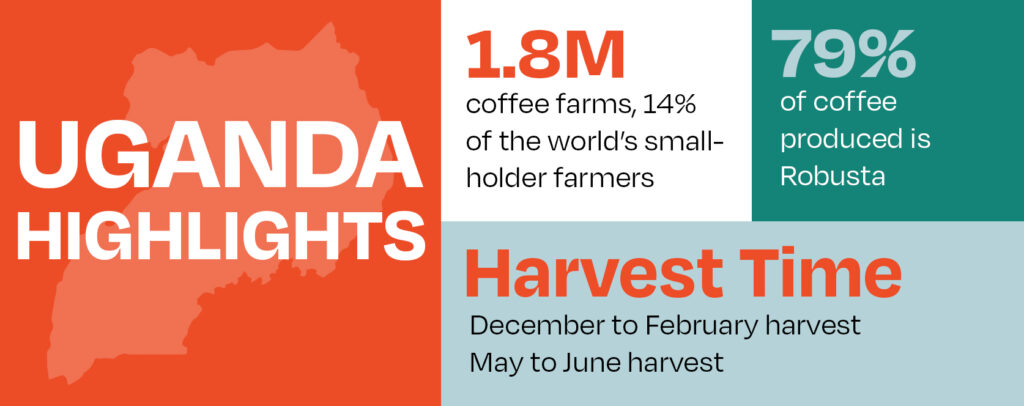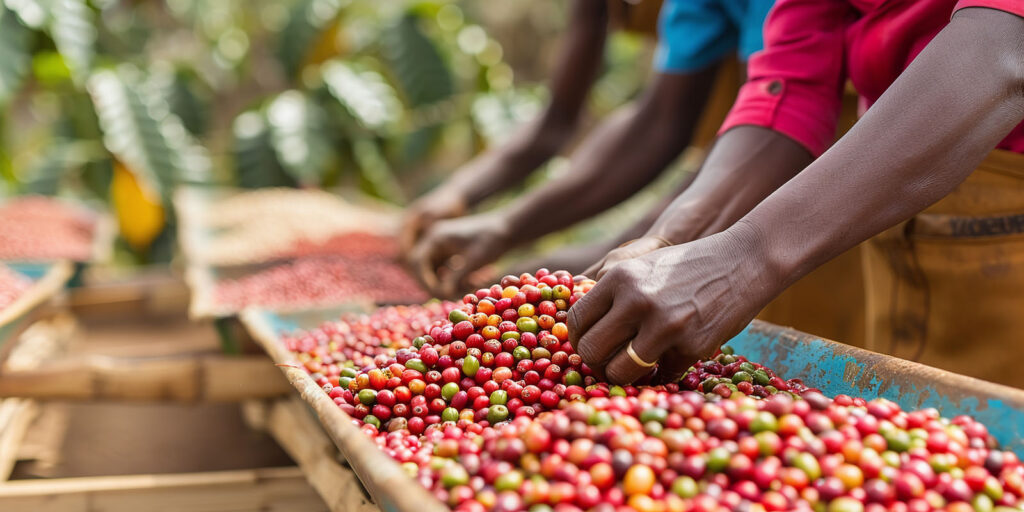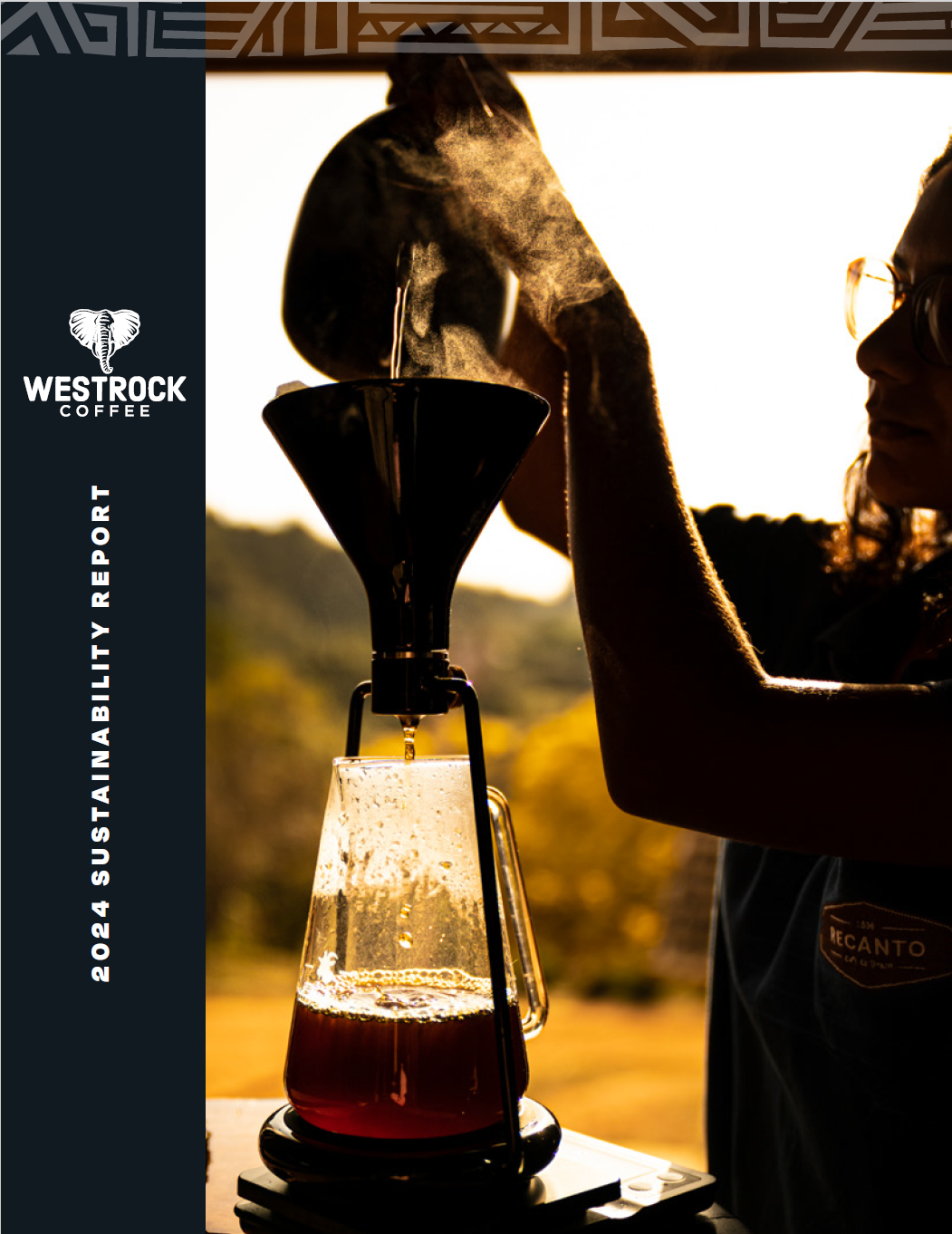April 14, 2025
Our final outing travelling through coffee producing countries takes us to Uganda. Located in east Africa, Uganda is landlocked and is surrounded by several other coffee producing countries including Kenya, Rwanda, and Tanzania. Like many other coffee origins, Uganda is located along the equator, has a tropical climate, and contains a myriad of landscapes that make it an ideal place to grow coffee. With two different types of coffee grown in Uganda, Robusta and Arabica, coffee is grown in five regions of the country from 900 to 2,300 meters above sea level.

One of the things that makes Uganda stand out from other coffee producing countries is the fact that Robusta coffee is a native plant. Robusta coffee was already growing wild in the rainforests of Uganda when coffee became the focus of cash crop farming across the world, thus the country began its journey in coffee with no external intervention. Although Robusta is native to Uganda, Arabica made its way to the country by way of foreign settlers in the early 1900’s and began to be cultivated in addition to the wild Robusta coffee.

The presence of wild coffee trees to this day is extremely rare. In most other coffee producing countries, coffee must be thoughtfully planted and cultivated whereas the rainforests of Uganda are intermingled with wild Robusta plants and other food crops. This naturally occurring agroforestry model allows the plants to thrive, and the coffee plants produce twice a year, doubling the opportunity for farmers to make money.
Although the landscape nurtures successful plants, it also presents the logistical challenge of getting coffee to export. As a landlocked country, Ugandan coffee must travel longer distances to get to port which can cause the quality of the coffee to diminish. In recent years, efforts have been made to remedy these, and both the quality and quantity of the coffee produced has improved. When it comes to the flavors of Ugandan Robusta, our flavor experts find that these coffees have low acidity and a nuttiness that lends itself well to rounding out blends. Arabica from Uganda on the other hand has notes of chocolate and wine.




